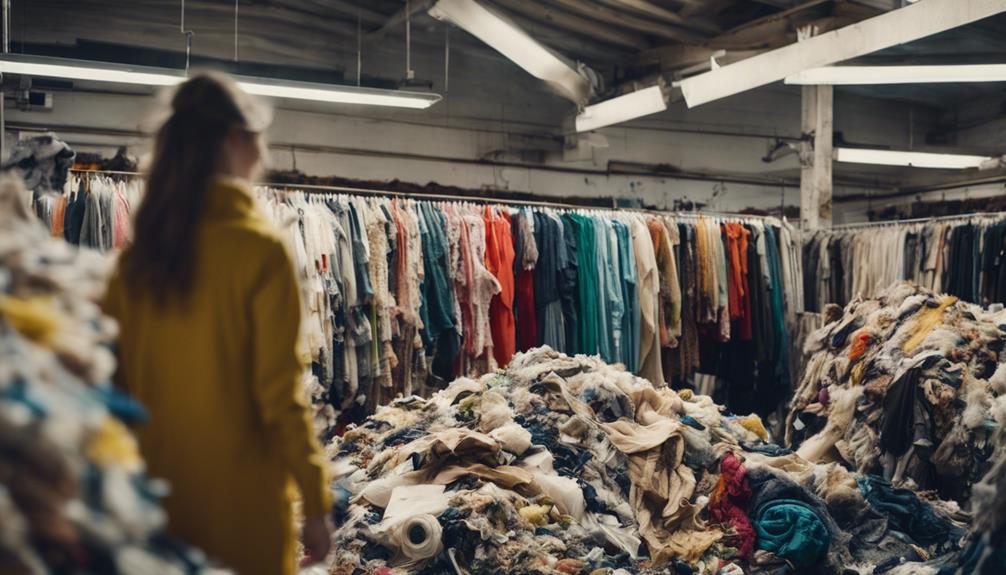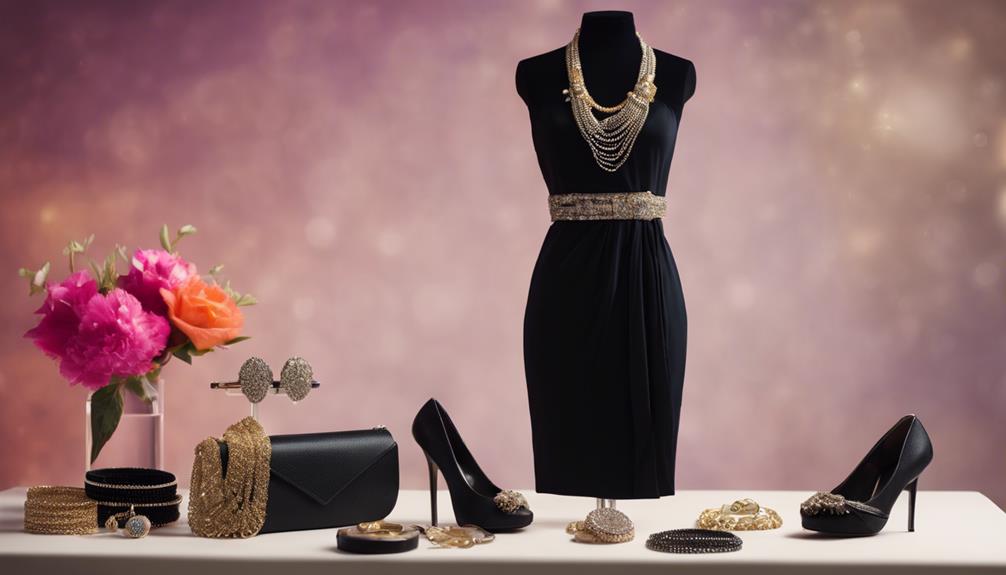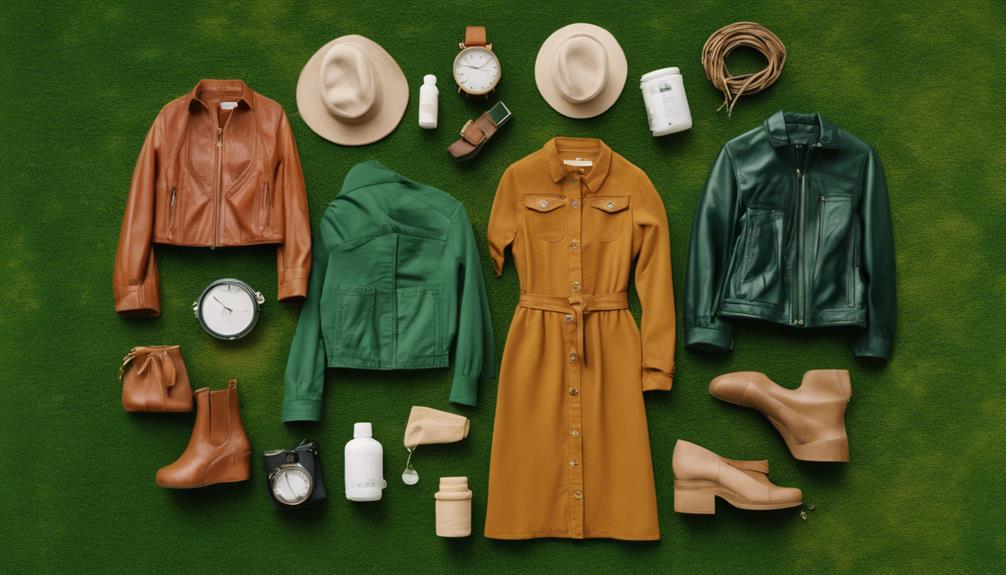Sustainable fashion may appear promising, but the reality is more complex. While it seeks to decrease waste and pollution, many brands misrepresent their dedication to sustainability. Innovations often fall short, and the prevalence of fast fashion habits hinders genuine progress. Consider this: 87% of clothing is discarded after just ten wears. Despite a growing consumer demand for ethical practices, without substantial regulatory changes, the industry struggles to advance. It may be beneficial to explore how to make more informed fashion decisions and gain a better understanding of the actual impacts of sustainable fashion on both our planet and our wardrobes! Thus, although sustainable fashion trends may seem like a positive direction, it’s crucial to dig deeper than marketing claims and consider the actual effects of the products we purchase. Educating oneself on various sustainable practices and supporting brands with transparent supply chains and ethical production methods can truly make a positive impact. Through making informed choices, we can contribute to a more sustainable and ethical fashion industry.
Key Takeaways
- Sustainable fashion reduces waste and pollution, addressing the environmental crisis caused by fast fashion's massive production and disposal rates.
- Many brands falsely claim sustainability, often prioritizing profit over genuine environmental responsibility, leading to consumer distrust.
- Innovations in sustainable practices have largely failed, requiring systemic change rather than isolated efforts for meaningful impact.
- The fashion industry lacks regulation, necessitating government intervention to enforce accountability for environmental costs and labor practices.
Industry Claims Vs. Reality
While the fashion industry boasts its commitment to sustainability, the reality reveals that little has changed in the environmental impact of clothing production over the past 25 years. You might think that sustainable fashion is making strides, but most products are still crafted from non-biodegradable materials, contributing to the ongoing waste crisis.
High-profile innovations, like bio-based fabrics and recycling initiatives, often sound promising but haven't greatly reduced the industry's overall environmental footprint. The misconception that sustainability exists on a spectrum leads many to believe that ‘less unsustainable' practices are enough, but they fall short of true sustainability.
It's crucial to recognize that even marketed sustainable items, such as carbon-positive and vegan products, can still end up in landfills, undermining their supposed environmental benefits. You might feel misled by these claims, as the gap between industry rhetoric and reality widens.
As consumers, you're increasingly calling for accountability, and many advocate for government intervention to guarantee that fashion companies genuinely address their environmental impacts. Without meaningful change, the sustainable fashion narrative risks becoming another marketing ploy rather than a commitment to responsible production.
Failed Innovations and Strategies
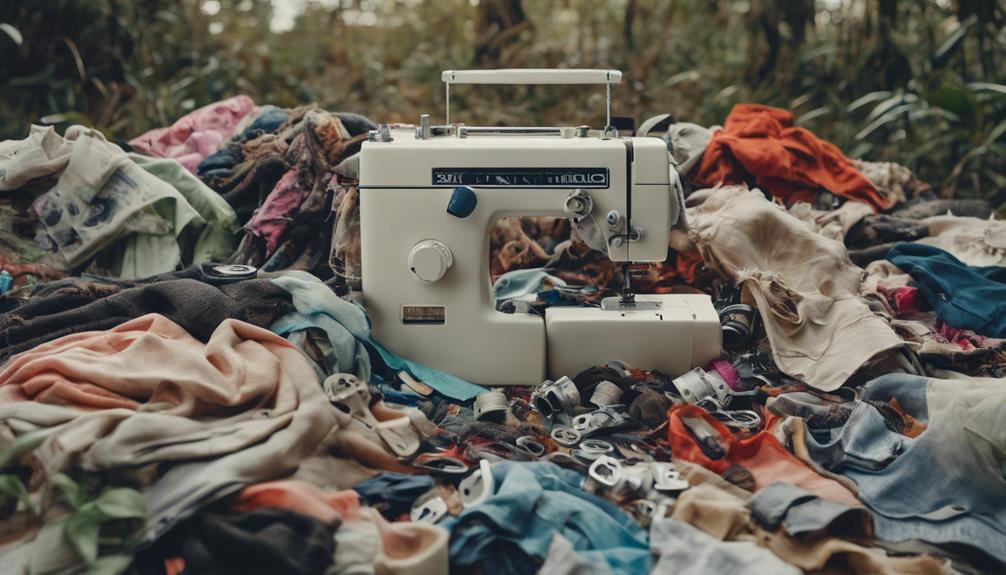
Many so-called innovations in sustainable fashion have failed to deliver real change, leaving the industry's environmental impact largely unchanged. High-profile initiatives like bio-based materials and recycling programs haven't considerably reduced the fashion industry's footprint, which has remained stagnant for the past 25 years. You might think models like Rent-the-Runway would help, but these strategies have also fallen short in mitigating environmental damage.
The notion that sustainability exists on a spectrum can be misleading. Many brands promote ‘less unsustainable' practices, but this approach doesn't equate to true sustainability. It's vital to recognize that efforts such as using carbon-positive or organic materials often overlook the root causes of environmental degradation in fashion.
Moreover, the absence of accountability allows companies to continue harmful practices without facing consequences. These failed innovations reveal a glaring truth: without genuine commitment and effective strategies, sustainable fashion remains a façade rather than a solution.
Need for Regulatory Intervention
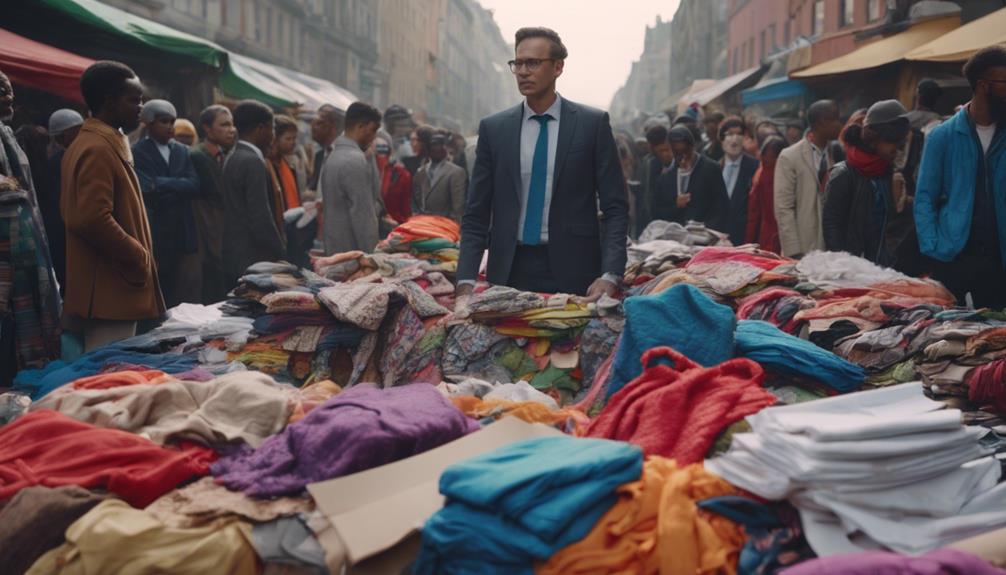
Regulatory intervention is essential for transforming the fashion industry into a sustainable model that genuinely addresses environmental and social issues.
You might be surprised to learn that the fashion industry remains largely unregulated, which leads to widespread environmental degradation and exploitation of factory workers.
With 87% of clothing ending up in landfills or incinerators annually, it's clear that current voluntary sustainability initiatives aren't enough.
You may think that sustainable brands alone can fix these problems, but the reality is that market-based solutions like recycling and rental models haven't greatly improved the overall environmental impact.
Government intervention could hold companies accountable for their negative environmental footprints, ensuring they pay for the costs associated with their production practices and waste.
New Business Models and Limitations
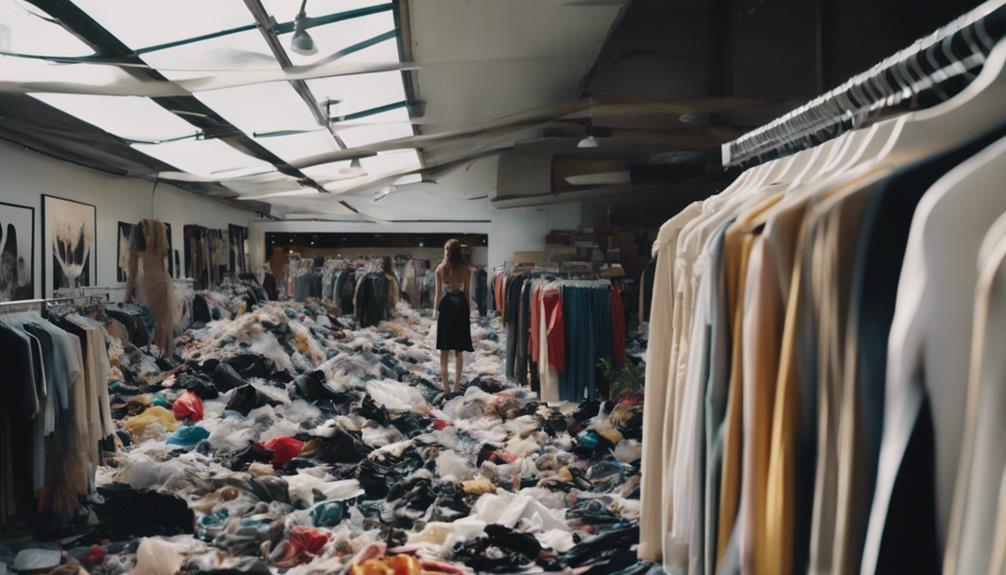
New business models in sustainable fashion, such as recycling and rental services, promise solutions to environmental issues, but their actual impact often falls short of expectations. While these models seem innovative, they rarely address the root causes of environmental degradation in the fashion industry. Here are three key limitations to take into account:
- Consumer Behavior: Fast fashion habits persist, making it difficult for new business models to gain traction. Many consumers still prioritize low prices and quick trends over sustainability.
- Limited Effectiveness: Concepts like Rent-the-Runway haven't considerably reduced the industry's carbon footprint. These alternatives often provide a false sense of sustainability without delivering measurable benefits.
- Lack of Systemic Change: Isolated innovations, such as recycling or rental services, can't replace the need for broader systemic change in the industry. True progress requires a collective shift in how fashion is produced, consumed, and valued.
Future of Sustainable Fashion

As you look to the future of sustainable fashion, you'll see that systemic change is essential for real progress.
Collaborative efforts between brands and consumers will be vital in shaping industry standards, while education around sustainable practices can empower you to make informed choices.
Together, these elements can drive the transformation toward a more responsible fashion landscape.
Systemic Change Required
Genuine progress in sustainable fashion demands a systemic change that transcends isolated innovations and addresses the industry's widespread environmental impacts. The fashion industry contributes 8% of global greenhouse gas emissions, and without a collective shift, this figure will only rise.
You can help push for this change by focusing on three key areas:
- Cultural Shift: Embrace the idea of longevity over disposability. Extending the lifespan of clothing by just nine months can reduce environmental impact by 30%.
- Regulatory Accountability: Advocate for stricter regulations that hold companies accountable for their environmental footprints. Current measures are inadequate, and businesses must face the costs of their negative impacts.
- Consumer Demand: As 71% of millennials prioritize sustainability, you can influence brands to adopt responsible practices by supporting those that genuinely commit to systemic change.
Collaborative Industry Efforts
Collaborative efforts among fashion brands are reshaping the industry by embracing circular economy principles that prioritize recycling, resale, and rental models to minimize waste.
These initiatives reflect a growing recognition that sustainability isn't just an individual brand's responsibility but a collective challenge that requires joint action. Industry leaders advocate for transparency in sourcing materials and production processes, fostering consumer trust and encouraging responsible purchasing decisions.
A significant number of brands have pledged to adopt sustainable practices, with 12.5% of the global fashion market committing to changes by 2020. This commitment showcases the power of collaborative efforts to drive meaningful impact.
Additionally, initiatives like clothing swaps and community events engage you directly in sustainable practices, promoting collective action toward reducing fashion waste.
The rise of collaborations between fashion brands and non-profit organizations is leading to innovative solutions, such as upcycling programs and educational campaigns.
These efforts aim to raise awareness about the environmental consequences of fast fashion, ensuring that both brands and consumers work hand-in-hand toward a more sustainable future.
Consumer Education Importance
Understanding the importance of consumer education in sustainable fashion can lead you to make more responsible choices that greatly reduce environmental impact. When you're aware of how your decisions affect the planet, you can actively contribute to a more sustainable future.
Here are three key areas where consumer education plays a crucial role:
- Extending Garment Life: By keeping clothing for just nine more months, you can reduce its environmental footprint by 30%. Awareness of this fact encourages you to cherish your wardrobe rather than constantly seek new items.
- Understanding Fast Fashion Costs: Knowing that 60% of clothing ends up in landfills or incinerators within a year helps you appreciate the true cost of fast fashion. This insight promotes more thoughtful purchasing decisions.
- Participating in Community Initiatives: Engaging in clothing swaps and educational events fosters a culture of sustainability. These collaborative efforts empower you and others to embrace mindful consumption.
Through effective consumer education, you can transform your shopping habits, prioritize quality over quantity, and greatly lessen your environmental impact.
Fast Fashion Overview

Fast fashion delivers a constant stream of trendy, low-cost clothing, but its rapid production cycle comes with significant environmental and social costs.
Each year, the industry churns out approximately 150 billion garments, with the average piece being worn just about ten times before it's tossed aside. This staggering statistic contributes to the grim reality that 87% of clothing ends up in landfills or incinerators.
The environmental impact of fast fashion is severe, accounting for 8% of global greenhouse gas emissions. It also consumes vast amounts of water—over 700 gallons are needed to produce just one t-shirt.
On the social side, fast fashion is linked to exploitative labor practices, with many workers enduring poor conditions and low wages in factories around the world.
While you might enjoy the affordability and variety of fast fashion, it's crucial to contemplate these hidden costs. The allure of trendy pieces often overshadows the urgent need for more sustainable practices.
Understanding these realities can help you make more informed choices in your shopping habits, leading to a more conscious approach to fashion.
Impact of Social Media

The influence of social media on fashion consumption has amplified the fast fashion cycle, as platforms like TikTok and YouTube promote a culture of instant gratification and fleeting trends. This rapid sharing of trends has a significant impact on the fashion industry and the environment.
Here are three key effects you should consider:
- Disposable Mentality: 'Haul' videos encourage purchasing cheap, trendy items that are often worn just a few times before being discarded, leading to excessive waste.
- Microtrend Cycles: The rise of microtrends means consumers buy more clothing, often focusing on what's fashionable now rather than prioritizing quality or longevity. This shift places greater strain on resources, contributing to negative environmental impact.
- Awareness vs. Action: While 71% of millennials express a desire for sustainable fashion, the overwhelming presence of fast fashion on social media often overshadows these intentions.
In this landscape, it's essential to navigate your choices mindfully, recognizing the environmental impact of your purchases and seeking out sustainable options that promote responsible consumption.
Sustainable Fashion Challenges
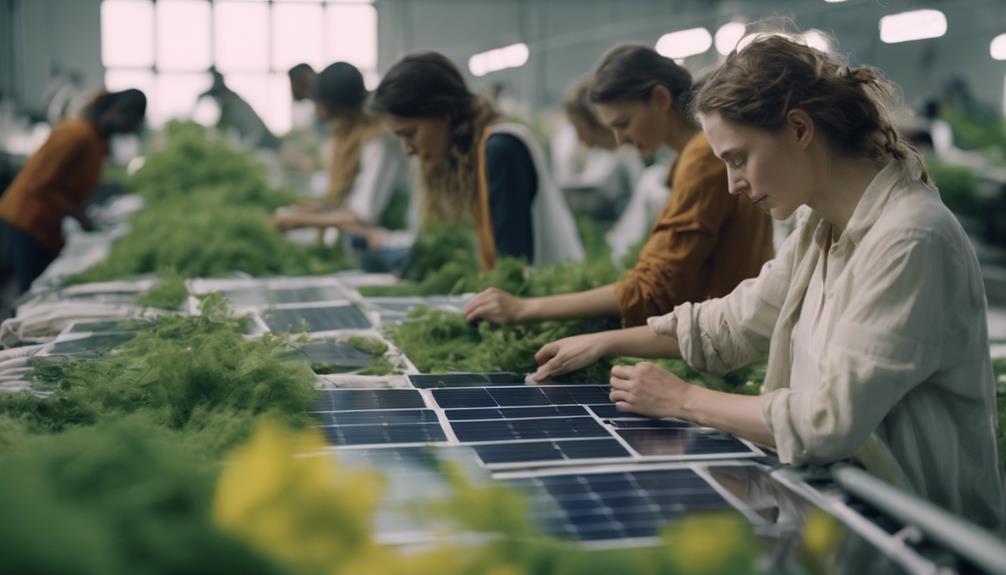
While many aspire to embrace sustainable fashion, several challenges hinder meaningful progress in reducing waste and promoting ethical practices. The fashion industry produces around 150 billion garments annually, yet a staggering 87% end up in landfills or incinerators. This immense waste highlights the unsustainable nature of current practices.
You might be surprised to learn that only 1% of discarded clothing is recycled, with recycling methods still in their infancy. Over the last 15 years, clothing purchases have surged by 60%, but the average garment is worn just about 10 times. This culture of overconsumption directly undermines sustainable fashion efforts.
Additionally, thrift stores are overwhelmed with unsold clothing, resulting in items often shipped to the Global South, creating further challenges for those regions. The lack of regulation in the fashion industry exacerbates these issues, allowing for the exploitation of factory workers and complicating the push for ethical fashion.
Without addressing these sustainable fashion challenges, meaningful change remains elusive. It's essential for you, as a consumer, to reflect on these factors when making fashion choices.
Innovations in Sustainable Practices

You might think that innovations in sustainable fashion are solving all our problems, but the reality is more complex.
Current advancements, while promising, still face significant limitations that hinder their effectiveness.
To truly make a difference, we need a systemic change that addresses both the practices and the mindset of the industry.
Limitations of Current Innovations
Innovative practices in sustainable fashion often fail to deliver meaningful change, leaving the industry's environmental impact largely unchanged. You might be surprised to learn that despite the rise of sustainable initiatives, the situation remains dire. Here are three key limitations you should consider:
- Landfill Crisis: Over 87% of produced garments still end up in landfills or incinerators, indicating that recycling and rental services aren't enough to tackle the problem.
- Ineffective Recycling: Only 1% of discarded clothing is successfully recycled. The current recycling processes are inadequate, showcasing a pressing need for better infrastructure to handle textile waste.
- Consumer Behavior: Business models promoting resale and rental often don't address the root causes of environmental degradation. Simply shifting how clothes are consumed doesn't greatly alter overall consumption patterns.
These limitations highlight that sustainable practices, while a step in the right direction, often fall short of creating real change.
The misconception that sustainability exists on a spectrum further complicates the industry's ability to truly innovate and improve its environmental footprint.
Need for Systemic Change
The fashion industry must embrace systemic change to truly address its environmental challenges and move beyond temporary innovations like recycling and rental models.
Despite the rise of sustainable fashion practices, the reality is stark: 87% of garments still end up in landfills or incinerators each year. The production of clothing has surged by 60% over the past 15 years, yet the average garment is worn only about 10 times. This highlights a critical need for you to change your consumer habits and for the industry to rethink its practices.
Currently, only 1% of discarded clothing is recycled effectively, indicating that recycling processes are still in their infancy and need significant improvement. If trends continue, the fashion industry is projected to generate 148 million tons of waste by 2030, making it imperative to shift to a circular economy.
Innovations like Patagonia's use of recycled materials showcase potential pathways for sustainable practices, but real progress requires widespread adoption and collaboration across the entire industry. By advocating for systemic change, you can help drive the necessary evolution in sustainable fashion.
Smart Shopping Strategies
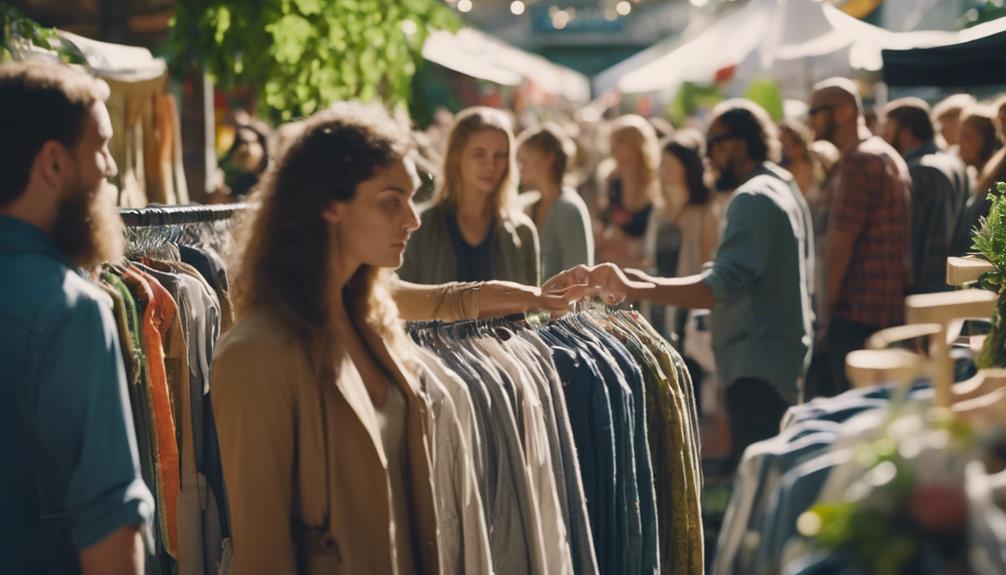
Smart shopping strategies empower consumers to make sustainable choices that positively impact both their wardrobe and the environment. By adopting these strategies, you can minimize waste and support ethical practices in fashion.
Here are three effective smart shopping strategies to take into account:
- Prioritize Thrift Stores: Shopping at thrift and consignment stores not only reduces waste but also gives pre-loved garments a new lease on life. This supports a circular economy in fashion, making your wardrobe more sustainable.
- Research Ethical Brands: Before making a purchase, take the time to research brands that prioritize sustainability. With 71% of millennials now focusing on sustainable options, finding ethical brands can help you make informed choices and contribute to a greener planet.
- Invest in Timeless Pieces: Instead of chasing fast fashion trends, focus on quality pieces that stand the test of time. This approach not only reduces the frequency of your purchases but also guarantees that your wardrobe remains stylish for years to come.
Frequently Asked Questions
Do People Really Care About Sustainable Fashion?
You might be surprised, but many people do care about sustainable fashion. While awareness is growing, not everyone's willing to pay extra. Still, shifting consumer behavior shows a desire for eco-friendly choices in fashion.
Does Sustainable Fashion Really Work?
You might wonder if sustainable fashion truly works. While it aims to reduce waste and emissions, current practices often fall short. Real change demands collaboration and a shift in consumer habits to make a meaningful impact.
Why Is Sustainable Fashion an Issue?
Sustainable fashion's an issue because it struggles with waste, low recycling rates, and high greenhouse gas emissions. You'll notice fast fashion's impact, as low-quality garments end up discarded after minimal wear, worsening environmental challenges.
Why Most of Fashion Today Is Not Sustainable?
In a world where fashion's fleeting spark burns brightly, you'll find most garments fade into waste. Fast fashion's cycle of disposability, toxic production, and pollution traps you in a relentless chase for the next trend.
Conclusion
Sustainable fashion isn't just a trend; it's a lifeline for our planet.
While industry claims often sparkle like diamonds, the reality can be murky.
You've got the power to navigate this complex landscape, embracing innovations and smart shopping strategies that truly make a difference.
As you step forward, remember: every choice you make can weave a brighter, greener future.
So, let's stitch together a world where fashion and sustainability walk hand in hand, creating a legacy worth leaving behind!
